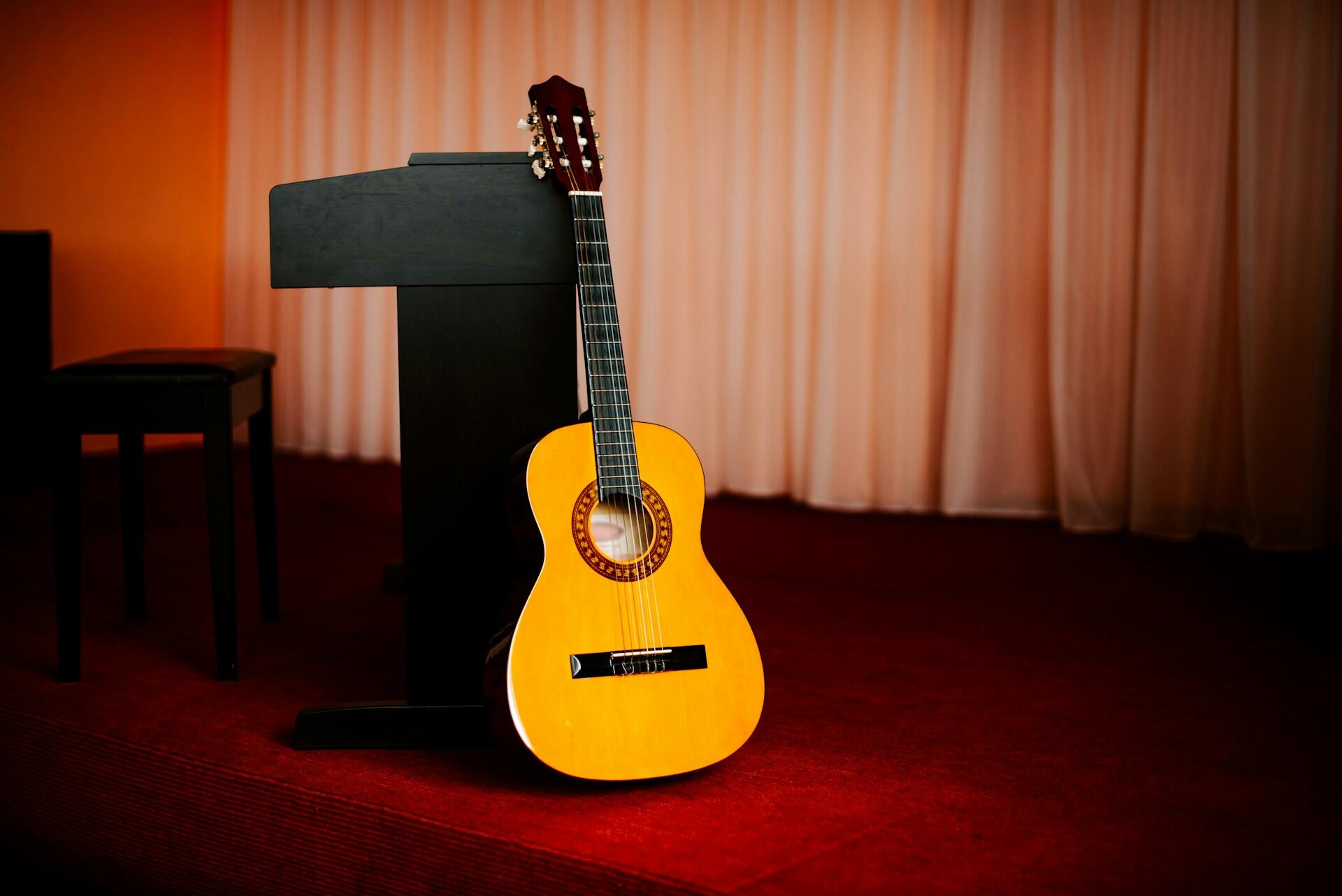There is no doubt that the guitar is one of the most popular instruments in the world. Present in genres ranging from jazz to country, from flamenco to pop music, the guitar has a rich history, a virtually perfect design and construction, and a central role in the music of many cultures around the world.
This quiz will test your knowledge of the construction, technique, and great figures in the history of the guitar. Whether you are a curious beginner, a music student, or a master of string instruments, get ready to sharpen your thinking and test your knowledge!
Quiz
Quiz :
The Invention of the Guitar and the Bass
The guitar is part of a family of instruments with very ancient roots, the plucked string instruments (chordophones). In ancient times, the Egyptians, Greeks and Romans already used instruments similar to lyres and zithers.
But the classical guitar (or “acoustic guitar”) as we know it today only began to take shape in the Renaissance and Baroque periods, between the 15th and 17th centuries. The current model, with 6 nylon or steel strings and a figure “8”, was standardised in the 19th century by the Spanish luthier Antonio de Torres Jurado.
A luthier is a professional who builds, repairs or maintains stringed musical instruments with soundboards. The term comes from the French “luth”, which means lute.
Since then, this instrument has undergone a series of slight changes before reaching its current form. Throughout the 20th century, the guitar spread throughout the world and gained prominence in various musical styles: in the US, it became essential in country, pop and even traditional music.

At the same time, the first electric guitars emerged from the need to increase the volume of stringed instruments (which were muffled in bands and orchestras). The first experiments took place in the 1920s, when musicians began to adapt magnetic pickups to traditional guitars to amplify the sound.
In the years that followed, the electric guitar underwent a true revolution. Several musicians and engineers in the United States competed to see who could best perfect the instrument. One of the biggest milestones came in 1950, when Leo Fender launched the Fender Broadcaster (soon renamed the Telecaster), the first mass-produced solid-body electric guitar. Gibson followed suit with the Les Paul, which would become another iconic model for the instrument. These models defined the look and tone of the modern electric guitar.
From the 1950s and 1960s onwards, the acoustic and electric guitars gained considerable prominence in popular music, becoming symbols of pop culture and youth counterculture. Later, the electric guitar would strongly influence genres such as blues, jazz, rock, and heavy metal, among others.
Guitarists such as Chuck Berry, Jimi Hendrix, Eric Clapton, and Jimmy Page helped to consolidate the legendary status of the electric guitar.
The acoustic and electric guitars are some of the most influential and recognised instruments in the world. Together, these instruments helped to democratize music, allowing people from different backgrounds to create and share their own style, influencing generations and shaping musical identities around the world! 🎸

















